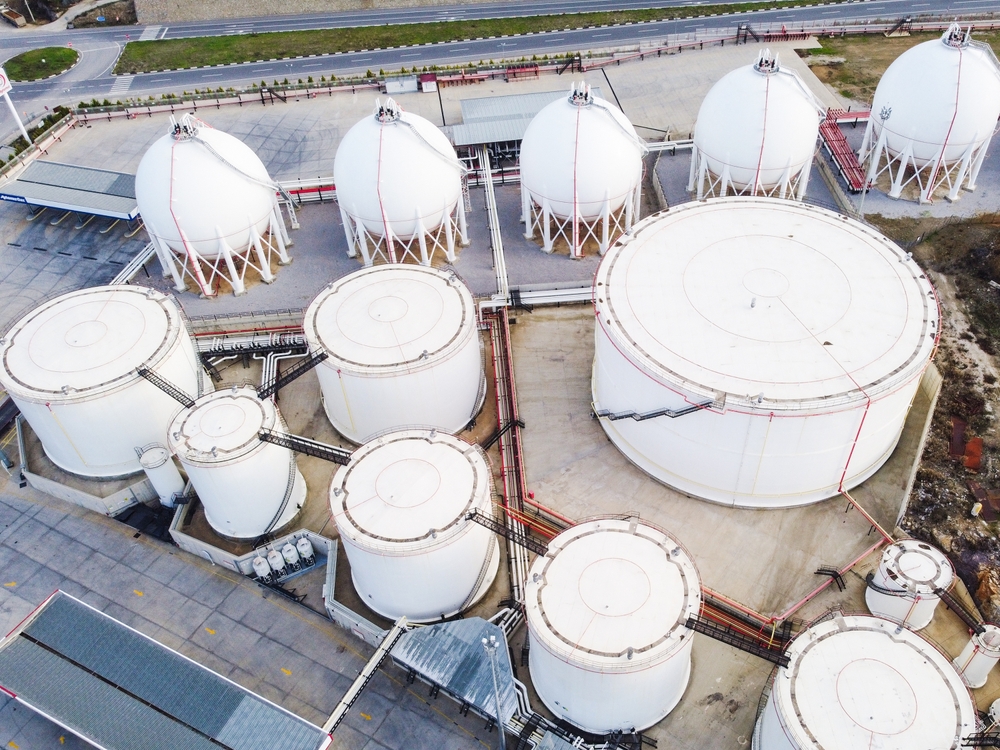Deskripsyon
Liquefied Natural Gas (LNG) is natural gas that has been cooled to a liquid state at about -162°C (-260°F) for ease and safety of non-pressurized storage or transport. LNG is composed primarily of methane, along with small amounts of other hydrocarbons like ethane, propane, and butane.
- Composition: Mainly methane (CH ) with some ethane (C H ), propane (C H ), and nitrogen (N ).
- Physical Properties: Colorless, odorless, non-corrosive, and non-toxic. In its liquid state, LNG occupies about 1/600th of the volume of natural gas in its gaseous state, making it much more efficient to transport over long distances.
- Production: Natural gas is extracted, purified, and then cooled to create LNG. This process involves removing impurities and cooling the gas to transform it into a liquid.
- Storage and Transportation: Stored in specialized cryogenic tanks and transported using LNG carriers, which are ships designed to maintain the low temperatures needed to keep the gas in its liquid state.
Liquefied Natural Gas (LNG) production involves a multi-step process to convert natural gas into a liquid form for efficient storage and transportation. The process begins with the extraction of natural gas from underground reserves, which is then purified to remove impurities such as water, carbon dioxide, sulfur compounds, and other hydrocarbons. The purified gas is subsequently cooled to approximately -162°C (-260°F) in a liquefaction plant, transforming it into a liquid state. This cooling process significantly reduces the gas's volume, making it easier and more economical to store and transport in cryogenic tanks and specialized LNG carriers. Once liquefied, LNG can be shipped to markets worldwide, where it is regasified and distributed for various uses, including power generation, heating, and as a transportation fuel. The production and transport of LNG require substantial infrastructure investments and strict adherence to safety standards due to the low temperatures and potential hazards involved.

- Cryogenic Storage Tanks Design: Our cryogenic tanks are specially designed to store LNG at temperatures as low as -162°C (-260°F). These tanks are typically double-walled, featuring an inner shell made from materials like stainless steel or aluminum to handle the extreme cold, and an outer shell constructed from concrete or carbon steel for added strength.
- Types of Tanks:
-
- Single Containment: Comprising a primary container to hold the LNG and an outer barrier to protect against spills.
- Double Containment: Includes an additional layer of protection with a secondary barrier that can contain the LNG if the inner tank fails.
- Full Containment: Combines features of both single and double containment systems, ensuring the highest safety levels.
- Insulation Systems:
-
- Vacuum Insulation: Utilizes a vacuum layer between the tank walls to minimize heat transfer and reduce boil-off gas (BOG) losses.
- Perlite and Foam Glass: High-performance insulating materials are used to maintain LNG at low temperatures, enhancing storage efficiency.
- Boil-Off Gas (BOG) Management:
-
- BOG Re-condensers: Capture and re-liquefy any vaporized LNG to prevent gas loss and maintain storage efficiency.
- BOG Compressors: Compress excess gas for re-use or re-injection into the LNG system, optimizing resource utilization.
- Safety and Monitoring Systems:
-
- Pressure Relief Valves: Automatically release pressure build-up to prevent over-pressurization.
- Gas Detection Systems: Continuously monitor for any gas leaks and trigger alarms if abnormalities are detected.
- Emergency Shutdown Systems (ESD): Rapidly shut down operations in case of an emergency, ensuring the safety of personnel and equipment.
Tingnan ang karagdagang mga detalye tungkol sa Sparco Engineering Sdn Bhd
